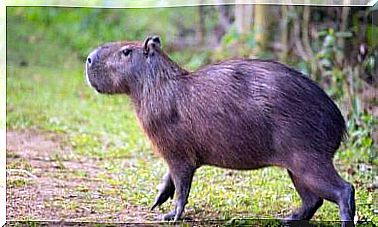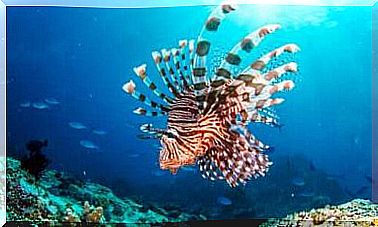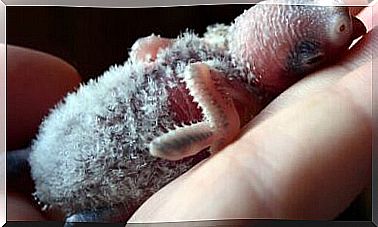Alzheimer’s In Animals: Important New Discoveries

Alzheimer’s is a neurological disease whose main risk group is the human population over 65 years of age. However, scientists say this pathology can also affect the animal kingdom. What are those symptoms that help detect Alzheimer’s in animals ? Read on to find out more.
In humans, the first key signs in diagnosing Alzheimer’s are memory loss, emotional problems, and reasoning difficulties. Unfortunately, these symptoms commonly evolve and worsen as the patient ages, eventually reaching a state of dementia.
Cognitive decline is associated with the formation of plaques and tangles of two fibrous proteins, the betamyloid peptide and the Tau protein, in the brain. However, studies have not yet confirmed whether these structures are the main cause of the disease or the result of a larger process.
Until now, animals have played a key role both in the development of scientific models to help understand the disease and in the therapy of affected individuals. Indeed, in recent years various wild animals have become the subject of study.
New findings on Alzheimer’s disease in animals
A few years ago, several discoveries related to the deterioration of animal brains changed the course of Alzheimer’s research. In fact, it was August 2017 when a group of scientists from Kent State University (USA) detected the signs of the disease in chimpanzees.

The credibility of the study was based on the fact that it was the first time it had worked with brain samples taken from deceased primates in the 1990s. The brains, from the National Chimpanzee Brain Resource, showed more fibrous protein plaques the older the animal was. Thus an analogy with the human species was highlighted.
Later, in October of the same year, another study published in the journal Alzheimer’s & Dementia revealed traces of the disease in some wild dolphins. These animals, like killer whales and humans, have a long life expectancy that transcends their fertile years.
This possibility of achieving longevity is what motivated a group of scientists from the University of Oxford (United Kingdom) to study the predisposition of cetaceans to contract Alzheimer’s disease.
In their research, they analyzed the brains of some dead dolphins that had stranded on the Spanish coast. In them they found the fribrose protein formations characteristic of the disease. This condition was associated with old age and led to their natural death.
However, it should be noted that the conclusions obtained in both experiments lack data on the symptoms these animals could have had in life. Therefore, their dementia cannot be fully confirmed.
Dementia in dogs and cats
Although the presence of Alzheimer’s has not been confirmed, these animals are likely to suffer from a similar condition. In the case of dogs and cats, this condition is known as cognitive dysfunction.

Among the studies that show the tendency to contract the disease is the one conducted by the University of California-Berkeley. In it, 62% of the dogs analyzed, with an age range between 11 and 16 years, had one or more symptoms of dementia.
Some of the most common signs of this condition, referred to in dogs as canine cognitive dysfunction (CDS) are:
- Disorders of the sleep cycle. The animal sleeps more hours during the day, so it can wake up at night.
- Lack of interaction with the owner or with other animals. The animal’s behavior highlights its inactivity and lack of motivation.
- Lack of appetite.
- Urinary or fecal incontinence.
When faced with these symptoms, the most advisable thing to do is to contact a veterinarian, especially if they occur at a young age. However, the general advice for a normal physiological state is to stimulate exercise, promote play, socialize the animal with other people or animals, and pay close attention to nutrition.









